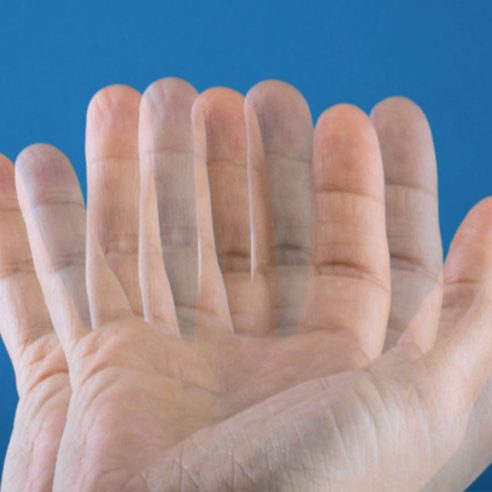
Palpebral ptosis or "drooping eyelid": causes and treatment
The drooping eyelid is known in medical terms as “palpebral ptosis”. It manifests itself by narrowing the visual slit of one or both eyes, creating aesthetic and functional discomfort.
Palpebral ptosis is a complex vision problem, and in what follows, we will address several aspects: why this ophthalmological disorder occurs and how many types it can be; how drooping eyelid affects children and adults, how to treat palpebral ptosis, but also the complications that can arise if the patient does not take any action.
What is palpebral ptosis and how many types can it be?
Palpebral ptosis is a dystrophy of the muscle that elevates the upper eyelid. It leads to the drooping of the upper eyelid, which also gives the appearance of a drooping or sagging eyelid, hence the popular name. The congenital lesion has the effect of narrowing the space between the upper and lower eyelid and thus narrowing the patient’s visual field.
It can affect one eye (unilateral palpebral ptosis) or both eyes (bilateral palpebral ptosis).
There are several types of the disease:
- Neurogenic ptosis – This form usually occurs in children and is caused by a dysfunction that disrupts the innervation of one of the muscles that help open the eyelid.
- Aponeurotic ptosis – This is the most common and is caused by the ageing of tissues of the tendon of the muscle that elevates the eyelid.
- Myogenic ptosis – Occurs as a result of muscle changes. The upper eyelid no longer performs its function well and is not kept in a normal position.
- Mechanical ptosis – A cyst or tumor in the upper eyelid leads to eyelid drooping.
What causes drooping eyelids?
The causes of palpebral ptosis may be muscular, neurological, traumatic, mechanical or aponeurotic.
The patient may suffer from “drooping eyelid”:
- From birth;
- In the context of other complex disorders such as Horner syndrome, Marcus-Gunn syndrome, orbital or brain tumors, common oculomotor nerve paralysis, myasthenia, congenital nerve paralysis III or autoimmune diseases;
- After the age of 60, when the orbito-palpebral tissues relax and create excess skin on the upper eyelid.
How does drooping eyelid manifest in children and adults?
Palpebral ptosis can affect both adults and children. In young children, the disorder is congenital in nature and surgery is recommended in the first year of life. In adults, it is an acquired disease, which often occurs as a result of ageing. The function of the muscles that elevate the upper eyelids decreases; so does the elasticity of the skin.
What are the symptoms of palpebral ptosis?
Ophthalmological disorder becomes visible by:
- Redness of the affected eye;
- Sensation of foreign object in the eye;
- Burning sensations, irritation;
- Eye strain and fatigue;
- Tearing and white discharge;
- Narrowing of the palpebral fissure and reduction of the visual field (depending on the severity of the disease);
- Double vision;
- Upper eyelid partially (or totally) covers the affected eye;
- Difficulty in closing the affected eye;
- Strabismus;
- Positioning the head back to compensate for palpebral ptosis. This can lead to chronic cervical discomfort;
- Constant raising of the eyebrows, likewise, to compensate for the narrowing of the visual field. This can lead to migraines;
- Unesthetic asymmetries.
How is palpebral ptosis diagnosed?
An ophthalmological examination is necessary to determine the severity of palpebral ptosis. During the examination, the specialist doctor carries out a series of investigations to find out:
- The type of disorder – whether ptosis is uni- or bilateral, neurogenic, myogenic, aponeurotic or mechanical;
- How much it affects the patient’s vision;
- Palpebral ptosis size;
- Causes of occurrence.
The treatment is then determined. This is designed to extend the visual field and improve the aesthetic appearance of the face.
How is palpebral ptosis treated?
Specialists in the Dr. Holhoș ophthalmology network recommend blepharoplasty surgery only if palpebral ptosis affects visual acuity. If the patient’s desire is more aesthetic than functional, the experts advise you to see a dermatologist or plastic surgeon in parallel, in order to obtain the most satisfactory final result.
Through surgery, the specialist shortens and strengthens the muscle that elevates the upper eyelid and repositions it so that the two eyes regain visual acuity and are symmetrical. Blepharoplasty is performed under local anesthesia and can be performed on both the upper and lower eyelids.
Palpebral ptosis: Complications
Not treating this eye disorder comes with a number of risks. Palpebral ptosis can lead to:
- Amblyopia – also known as “lazy eye”;
- Astigmatism – the curvature of the cornea is distorted by the pressure of the drooping eyelid, affecting visual acuity;
- Torticollis – especially in children who force their head into different positions to compensate for incomplete visual field.
If you have problems with your vision, see a specialist. The Dr. Holhoș ophthalmology network is present in Cluj-Napoca, Alba-Iulia, Mediaș, Sibiu and Turda, and is waiting for you in its clinics to offer you the best care with state-of-the-art technology.






























